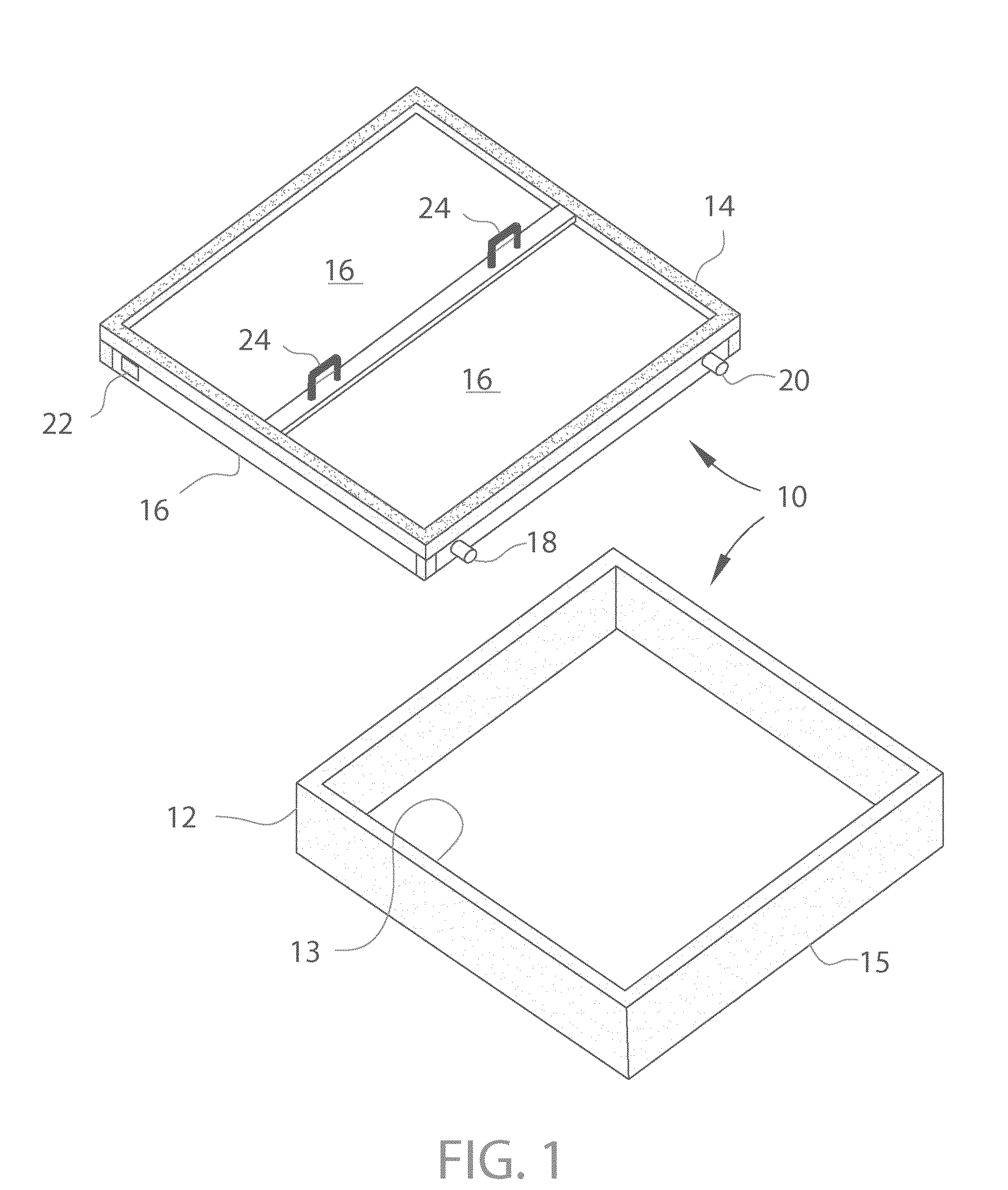Method of detecting leakage from geologic formations used to sequester CO2
a technology of geologic formations and leakage detection, which is applied in the direction of fluid detection at leakage points, instruments, boreholes/well accessories, etc., can solve the problems of difficult direct determination of carbon dioxide leakage from the sequestration reservoir to the atmosphere, difficult detection of micro seepage, and high concentration, so as to facilitate the migration of endemic gases to the surface and avoid material costs
- Summary
- Abstract
- Description
- Claims
- Application Information
AI Technical Summary
Benefits of technology
Problems solved by technology
Method used
Image
Examples
Embodiment Construction
[0049]The instant invention provides methods for the verification of barrier integrity. In particular, this invention provides a method for the detection of carbon dioxide gas leakage from sequestration reservoirs. The method provides for a more sensitive leak analysis inasmuch as sulfur- and / or halogen-containing tracer moieties are used. The invention also provides a process for the sampling and measurement of methane and carbon dioxide in soil gases to differentiate between unsequestered (i.e., ubiquitous) carbon dioxide coming from in or near the surface and any leaking carbon dioxide which has been injected.
[0050]Aside from atmospheric sources of methane and carbon dioxide, methanogenic bacteria in the soil adds to the ubiquitous methane load. This methane can be distinguished from deep geologically stored methane. The isotopic distribution of methane from bacteria is different from the isotopic distribution of methane from deep geological sources for reasons very similar to th...
PUM
| Property | Measurement | Unit |
|---|---|---|
| diameter | aaaaa | aaaaa |
| temperature | aaaaa | aaaaa |
| pressure | aaaaa | aaaaa |
Abstract
Description
Claims
Application Information
 Login to View More
Login to View More - R&D
- Intellectual Property
- Life Sciences
- Materials
- Tech Scout
- Unparalleled Data Quality
- Higher Quality Content
- 60% Fewer Hallucinations
Browse by: Latest US Patents, China's latest patents, Technical Efficacy Thesaurus, Application Domain, Technology Topic, Popular Technical Reports.
© 2025 PatSnap. All rights reserved.Legal|Privacy policy|Modern Slavery Act Transparency Statement|Sitemap|About US| Contact US: help@patsnap.com



